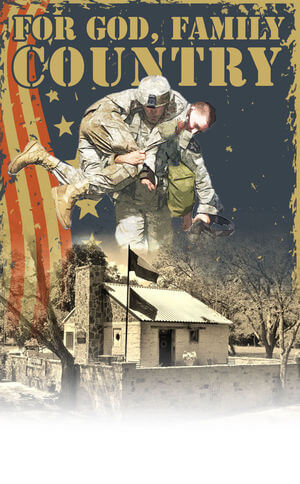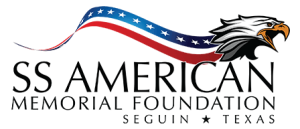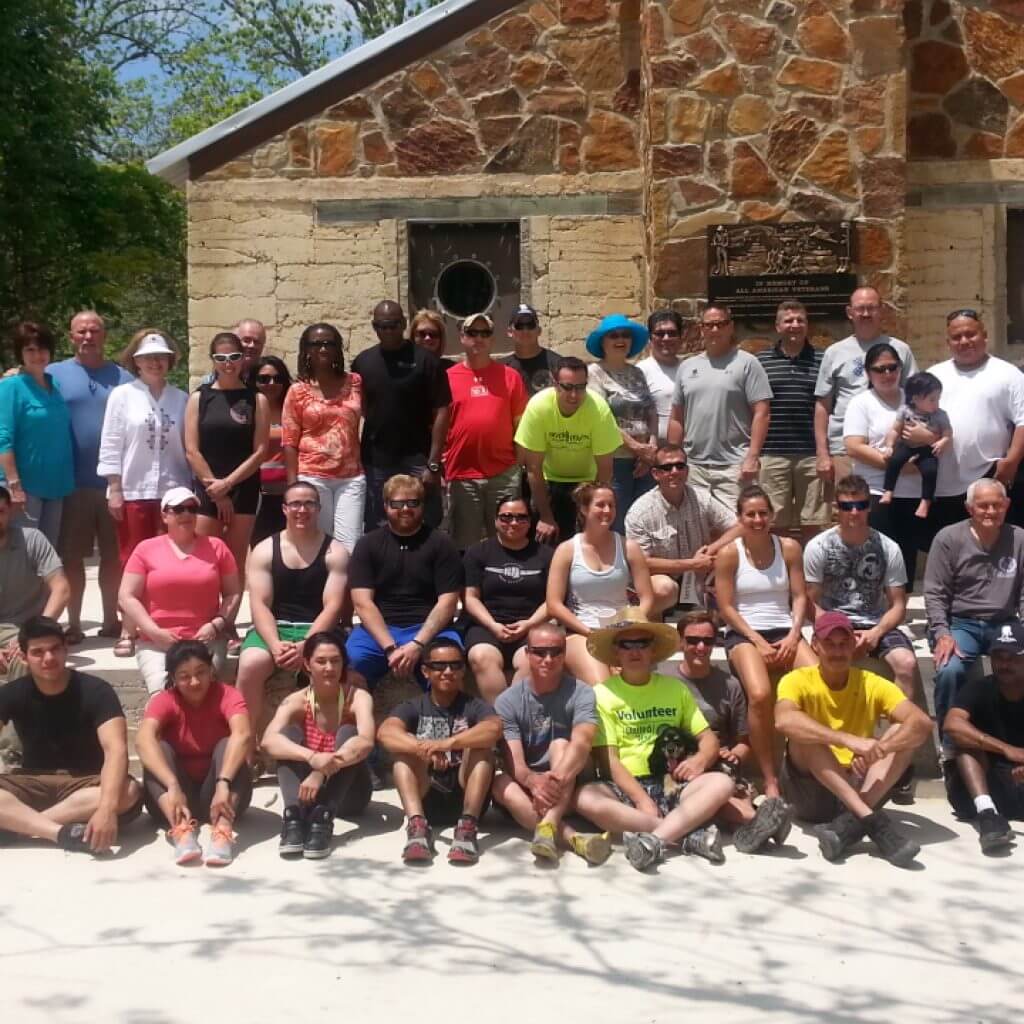
SEGUIN — It’s hard to encapsulate what exactly the SS American Memorial and Lazy U Ranch are.
On the surface, it’s a living memorial to those who have sacrificed their lives, limbs and years in service to the United States of America.
But like old battlefield wounds, the story is much deeper than what appears on the surface.
LAYING A FOUNDATION
Craig Russell and his family trace their Texas lineage back six generations. “On both sides of our family there is a history of military service that spans every conflict to date, including the Spanish American War, Terry’s Rangers and the Civil War,” Russell, a Navy veteran, said.
“Our family history shows a timeline of God, family and country regarding patriotic duty,” Russell said emphasizing God, family and country. “This history of duty is how this country was made, this history depicts individual sacrifice.”
The origins of the SS American Memorial date back to J.J. Ulbrich, a World War II veteran, who decades after the war put his engineering know how to use, building the initial building.
Ulbrich, Russell’s father-in-law, started construction on the building in 1984.
“I didn’t ever imagine that this building would turn into what it has,” the 88-year-old Ulbrich said.
The walls of the memorial are made out of a limestone road base, and he used a rammed earth construction technique, Ulbrich said.
“I used what I had in the area,” Ulbrich said. “It (the construction and materials) helps keep it cool in the summer and warm in the winter.”
Ulbrich finished construction on the 2-foot-thick walls in 1995.
The exterior and interior of the building were finished with funds and labor donated by veterans and civilians in 2014, Russell said.
“It’s amazing what has been done here,” Ulbrich said. “This really is a great place for veterans.”
In fact, the name SS American Memorial hearkens back and honors those who contributed to the memorial in its early days.
“The SS stands for ‘Submarine Service’ veterans that started the Lazy U Ranch Independence Day event back in 2000 and who were the driving force behind the SS American Memorial building,” Russell said.
SERVING THOSE WHO SERVED
The SS American Memorial is only a small — albeit important — portion of what is offered to wounded warriors.
“Lazy U Ranch offers water- and land-based recreation opportunities to help wounded warriors heal,” Russell said.
Activities available to veterans include kayaking, canoeing, fishing, swimming, mountain biking, horseshoes and washer pitch.
Former U.S. Army Master Sgt. Brad Bowen, who is now a contractor working with the Army’s Soldier Adaptive Reconditioning Program, has seen first-hand what the activities and the SS American Memorial do for wounded warriors.
“One of the biggest things it offers veterans is a peaceful place where they can relax,” said the former 1st Cavalry Division soldier. “They can enjoy whatever they like out here whether it’s the water, fresh air, good company or the memorial. It’s a place where veterans can see that all their hard work and sacrifices are appreciated.”
Bowen estimates that within the past year he has brought more than 300 veterans to the ranch.
The former battalion motor sergeant said he is proud that he can help bring wounded warriors out to the memorial.
“As a veteran, it’s very self-fulfilling,” Bowen said. “I really enjoy the outdoors, and I really enjoy being able to be out here watching these veterans heal.”
The ranch’s activities are all at wounded warriors’ leisure allowing veterans to heal at their own pace, Russell said.
FIGHTING TILL THE END
Sometimes some of the warriors can’t heal physically, so the focus is on their spirit. Such is the case with Lamar Norris. Norris is a captain in the U.S. Army and up until his illness was the acting Executive Officer for the Warrior Transition Battalion. Prior to the Army, Capt. Norris served in the U.S. Marine Corps.
Unlike many times in his military career, this warrior is fighting a battle he knows he can’t win.
“In 2013 — around Halloween — I was diagnosed with a rare form of cancer sarcoma,” Norris said. “About 50 people in the world get this cancer per year. There’s no cure, no treatments — it’s terminal.”
The exact type of cancer is Peritoneal Sarcoma, Norris said.
Despite his situation, Norris said the ranch has helped him come to terms with his condition.
“It’s comforting because we’re used to being outside — we (veterans) like being out in nature,” Norris said. “A lot of the wounded warrior events are inside, so this is a kind of a release where you have the water, the serenity of the trees — the nature just envelops you out here. You don’t find that everywhere. This is truly a unique space. It’s serenity for us.”
The special operations soldier said that the ranch helps wounded warriors’ families heal too.
“This is well needed,” Norris said. “I’ve traveled the world; I’ve been to third-world countries, and some of them are really beautiful. It’s like out here with the tranquility of everything. These places are not just needed for wounded warriors but their families also.”
Norris and his family met the Russell’s during the 2014 Christmas holiday season.
“Capt. Norris and my family developed a close relationship,” Russell said. “I have met few people that exemplify the values of sacrifice for country, family, and God like Captain Lamar Norris does.”
Russell, along with other veterans and civilians who are involved with the memorial and ranch, have made a commitment to Norris to help take care of his family after he passes, and Norris said that really means a lot to him.
“It’s very important to me,” Norris said. “A lot of people like to think of their legacy as what people leave behind or what they did. People normally have something written on their tombstone that represents what their legacy is. To live, to love and to leave a legacy are basically the three things that we are put on this earth to do. But leaving a legacy doesn’t necessarily mean leaving your mark on the world, so much as you’re going to leave your mark but it’s going to be with your family. For me, my family is my focus being that I’m not a politician — I’m not here to affect world policies. I’m here in a different capacity. Maybe someday in the future of my family and the tribulations, they’ll leave a different kind of legacy.”
That legacy of service, fellowship, love and camaraderie are why Russell and his family decided to help veterans at the memorial and ranch, he said.
This article originally appeared on the http://seguingazette.com/, all rights reserved.

